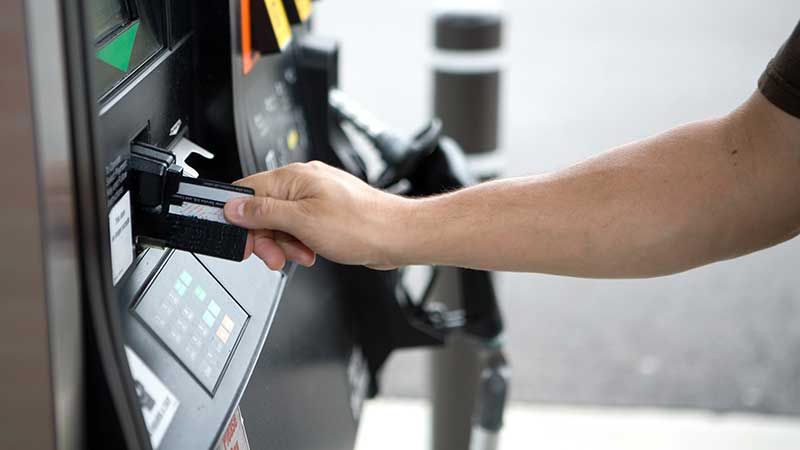A Guide to Driver-Friendly New Fuel Card Implementation
Fuel cards are an increasingly popular tool. They offer valuable features like automated data collection and improved protection against fraud. Once a business decides that a fuel card looks like a good investment, they face the implementation process.
A smooth implementation is important. Businesses depend on their drivers. And drivers depend on a reliable, flexible payment method. The long term benefits offered by a fuel card don’t need to come at the expense of a costly disruption. With a user-friendly fuel card and the right resources, fuel card implementation can be quick (30 days or less) and painless.
This article provides a guide to managing an effective fuel card implementation.
Goals for Fuel Card Implementation
An effective fuel card implementation should focus on these goals:
- An organized transition with a clear timeline.
- A process that is transparent and simple for drivers.
- Maintaining momentum to accomplish the transition in around 30 days.
A quick, organized transition ensures that your business can begin benefitting from its new card as soon as possible. It also helps avoid the annoyance of managing two payment solutions at once.
Preparing for an Effective Fuel Card Implementation
Take Ownership and Provide a Point-of-Contact
Someone should have clear responsibility for the implementation process. This person may be a small business owner, office manager, or designated fleet manager. They will serve as the designated point of contact for drivers. This helps ensure everyone knows where to go with questions or issues.
Establish a Timeline
Work with your vendor to establish a clear implementation timeline.
Focus on realistic deadlines, not the fastest transition possible. An extra week or two is worth it to get all your drivers on board for a successful launch.
Gather Key Staff Information
Your fuel card shouldn’t require very complex information to get started. It is helpful, however, to gather this basic information ahead of time. Gathering these basics first will help avoid unnecessary delays once you’ve begun rolling out your new card.
We recommend working with your card vendor to determine precisely what they’ll need for a successful implementation. Information typically required for each driver will include:
- Name
- Address
- Phone/E-Mail
- Vehicle VIN Number
Assemble Vendor Resources
Take advantage of any resources your vendor can offer. The best fuel cards will have tools to ensure a successful transition while saving you time.
Your vendor should be able to help with resources like:
- FAQ, Training, and Support Documents
- Staff to help manage the switch to a new system.
- Reporting tools to streamline implementation management (like tracking which drivers have activated their cards).
If your vendor doesn’t have one of these resources available, you will need to spend some extra time to develop them for yourself.
With all of these resources in place, you’re ready to start rolling out the new fuel card.
Phase One: Announcing the New Card
The big day is here! It’s time to make the switch to a new fuel card.
The first step is announcing the switch. Everyone from drivers to accounting should know that a new card is being implemented.
Explain the reasons behind your switch to the new card. Understanding “why” makes change feel less arbitrary. A little explanation will make learning a new process feel less frustrating.
Keep your current system running for now, but let everyone know about a firm “off” date. A clear cutoff encourages uptake of the new cards.
If you’re switching from an old fuel card…
In this case, you may not need to educate drivers about the concept of a fuel card. You can still explain the reasons behind your switch.
If you’re introducing fuel cards for the first time…
If fuel cards are new to your organization, some additional education will be helpful. Help drivers understand how fuel cards will help streamline their day-to-day work (no more receipts!).
Phase Two: Getting Your Drivers Ready for the Switch
Even if your drivers understand the reasons behind a new fuel card, change can be frustrating. Your card will work best if drivers don’t feel like it is a tool for punishment. The goal isn’t for drivers to purchase gas in fear.
Don’t present your card as a way to control how your drivers do their job. That approach risks alienating the employees who do their job best. Make it clear that you trust your drivers.
Try to keep driver instructions as clear and concise as possible. For instance, instead of presenting paragraphs of technical documentation, try a checklist for using the new card.
Provide, clear, simple instructions: “Return your old card by this date, to this location. Activate your new card by this date at this site or using this phone number.”
We also recommend creating a FAQ document for drivers, built around clear tips for both activating and using their new card. If you notice the same question coming in from multiple drivers, be sure to add it to the FAQ. You can check out our sample driver FAQ here.
Most importantly, remind your drivers that a fuel card will have real benefits for them too.
Fuel Card Benefits for Drivers
Key Driver Benefits
- A high-quality fuel card should offer coverage of the vast majority of fuel stations, regardless of brand, region, or rural/remote location. With this coverage in place, drivers won’t need to waste time hunting for the right brand of station
. - Fuel card providers can provide tools to help locate the cheapest on-route options for in-network gas or service (including options for specialized fueling needs like diesel, E85, or CNG).
- With their new fuel card, drivers won’t have to collect and submit receipts! And they can easily track their spending on an app.
- Easy mobile access: drivers can access detailed purchase information, check their account, and request a new card right from an app on their own smartphone.
- Fuel cards will help drivers to discover unconscious habits that may make them a less efficient driver. Performance transparency will help build their skills as drivers.
- Fuel cards, along with more advanced fleet management systems, are an accelerating trend in this industry. Drivers will be learning a valuable long-term skill by becoming proficient with their fuel card.
- Personalized PIN numbers mean an innocent driver won’t be blamed for fraudulent transactions after a card is lost or stolen.
Phase Three: Launch the New System
It’s time to send your drivers their new fuel card! The best delivery method can vary depending on the nature of your business. You can mail out new cards, or have drivers pick them up from a designated local site.
Pro Tip: Set up an intuitive system for tracking who has and hasn’t activated their new card.
As cards are being delivered, don’t be afraid to remind your drivers of key transition requirements:
- You should receive your card on X date
- Activation is required by X date
- If applicable: The old card will be turned off on X date
- Always provide drivers with instructions on who to contact if they haven’t received their card / what to do if their card stops working.
Clear communication and frequent, friendly reminders should put most of your drivers on track for adoption by the deadline.
As the big day approaches (about 24-48 hours in advance), develop a sense of urgency to encourage stragglers to activate their new card. Try to make it clear that now is the time to activate.
Possible options to reinforce this urgency include:
- Reminding drivers that their old card won’t work after the deadline.
- Consequences for drivers who fail to adopt the new cards may be necessary.
- Eventually, reluctant drivers may need to be called in for a personal conversation to help get them on track with the fuel card.
Pro-Tip: You can also consider an incentive program. Even a relatively small spend, like a raffle for the first 5 drivers who activate their cards, can help improve uptake and make the transition feel more light-hearted.
Phase Four: Discontinue Use of Older Cards
Getting old cards (fleet or credit) out of the field is a priority. Managing two systems at once is not the right outcome. Each card out of the field is one more that can’t be lost or stolen.
Once again, the most important thing is clear communication. Drivers should mail-in or drop-off their old payment method by a designated date.
Phase Five: Thank Everyone for a Successful Transition
Sure, your new card may not be optional, but it still helps to recognize that change is hard and thank drivers for helping facilitate a smooth implementation of your new card.
Fuel cards should not be very hard to use. They should be second nature for your drivers before long. In the first few months after switching to a new fuel card, you may see an elevated volume of support calls. But if drivers have been well-educated on card use, they shouldn’t need much day-to-day support for long.

